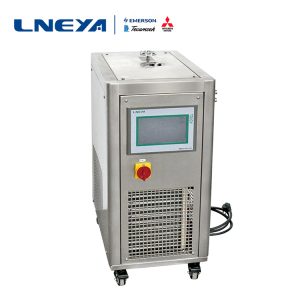Principle analysis of operation of refrigeration heating circulator
With the continuous development of technology, more and more refrigeration equipment has appeared in our lives, such as: refrigeration and heating circulators, in fact, they are not ordinary, are remarkable refrigeration equipment.
The refrigeration heating circulator uses a limited amount of refrigerant in a closed refrigeration system to repeatedly compress, condense, expand, and evaporate the refrigerant, and continuously absorbs heat and vaporizes at the evaporator to perform cooling and cooling. The process of cooling the object to below ambient temperature and maintaining the low temperature by the refrigerant moving the heat from a low temperature object (such as a cold storage) to a high temperature object is achieved by using a refrigeration device.
An important parameter of the refrigeration heating circulator is the refrigeration coefficient, also known as the operating coefficient of the refrigeration unit, indicated by the symbol COP. The refrigeration heating circulator Xiaobian tells everyone that at a certain ambient temperature, the lower the cold storage temperature, the smaller the cooling coefficient.
So, what are its advantages?
The entire liquid circulation is hermetic, with an expansion vessel, the expansion vessel and the liquid circulation are adiabatic, do not participate in the liquid circulation, but are mechanically connected, regardless of whether the temperature of the liquid circulation is high temperature or the medium in the low temperature expansion vessel is less than 60 degrees. .
The entire liquid circulation is a closed system. There is no absorption of water vapor at low temperatures. There is no oil mist at high temperatures. The heat transfer oil can have a wide operating temperature; mechanical and electronic valves are not used in the entire circulation system.
Next, let’s look at the refrigeration principle of the refrigeration heating circulator.

Compressed air refrigeration cycle
Since the air temperature heating and the constant temperature heat removal are not easy to achieve, it cannot be operated in the reverse cycle. In the compressed air refrigeration cycle, two constant pressure processes are used to replace the two constant temperature processes of the reverse cycle, so it can be regarded as a reverse cycle. In engineering applications, the compressor can be piston or impeller.
Compressed vapor refrigeration cycle
The reverse refrigeration cycle of compressed steam can be theoretically achieved, but a state of too low dryness will occur, which is not conducive to the compression of two-phase materials. Refrigeration heating circulators, which tell you that in order to avoid adverse factors, increase cooling efficiency and simplify equipment, throttle valves (or expansion valves) are often used instead of expanders in practical applications.
The compressed vapor refrigeration cycle uses a low-boiling substance as a refrigerant, and utilizes the constant pressure in the wet vapor zone to determine the temperature, and the constant pressure gasification endothermic refrigeration at a low temperature can overcome some of the disadvantages of the above-mentioned compressed air and regenerative compressed air circulation.
Absorption refrigeration cycle
The absorption refrigeration cycle utilizes the different solubility characteristics of the refrigerant at different temperatures in the solution, so that the refrigerant is absorbed by the absorbent (ie solvent) at a lower temperature and pressure, while at the same time making it at a higher temperature and pressure. Evaporate from the solution and complete the cycle for refrigeration purposes.
Related recommendations
-
How to choose laser chiller?
1911The term laser is an acronym for light amplification by stimulated radiation. When the electrons in the atoms of optical materials (such as glass, crystal or gas) absorb the energy of the current, a laser is generated. The increased energy excite...
View details -
How To Choose The Screw Type Water-Cooled Chiller
1862Compared with the similar chillers, the screw type water-cooled chiller has many advantages. We as one of the top chiller manufacturers share you more. 1. The temperature of the heat conducting liquid can be adjusted to any temperature you want, a...
View details -
How to choose the cooling and heating temperature control system?
1692The price of the refrigeration heating temperature control system is not the main factor. The main purpose is to implement the temperature control technology through the temperature control function. However, it is not the temperature control syst...
View details -
Professional introduction and application of cooling circulating water machine
1541The cooling water machine (the chiller, also known as the chiller) is an air-cooled water circulation device that does not require a cold water tower. It is a compressor-cooled design that is designed for machines, scientific instruments, or produ...
View details
 LNEYA Industrial Chillers Manufacturer Supplier
LNEYA Industrial Chillers Manufacturer Supplier













